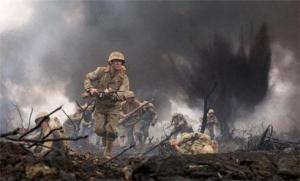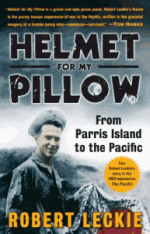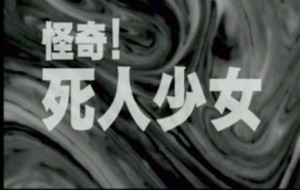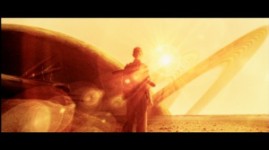 Everyone who watches Japanese film knows about Versus. And for good reason, this is an awesome movie. I tend to shy away from movies that are excessively popular. This is because having never been popular myself, I harbor a deep subconscious resentment for all things that become popular. But, in this case, I will grudgingly accept that Versus has earned it’s popularity for good reason.
Everyone who watches Japanese film knows about Versus. And for good reason, this is an awesome movie. I tend to shy away from movies that are excessively popular. This is because having never been popular myself, I harbor a deep subconscious resentment for all things that become popular. But, in this case, I will grudgingly accept that Versus has earned it’s popularity for good reason.
Written and directed by Kitamura Ryuhei, Versus stars Sakaguchi Tak and Sakaki Hideo in roles that garnered them huge cult status. Versus was so popular that it inspired the 2002 film Alive, starring the two actors in virtually identical roles and also directed by Kitamura.
After spending hours watching atrociously low-budget Japanese zombie films, Versus and the film’s amazingly choreographed action sequences look like works of art. This movie is a full throttle action movie. And, like any good action movie, the main characters are simply too cool for names.
The two main characters – Prisoner KSC2-303 (Sakaguchi Tak) and The Man (Sakaki Hideo) – are trapped in a karmic cycle where every century or two they must fight to the death over the entrance to the 444th Portal (the Japanese equivalent of 666), the power contained within it, and the life of a girl.
 Directed by Tomomatsu Naoyuki and based on a novel by Otsuki Kenji, the 2001 film Stacy seems like a pretty good idea – what’s not to love about undead zombie schoolgirls? The film opens with the following narration:
Directed by Tomomatsu Naoyuki and based on a novel by Otsuki Kenji, the 2001 film Stacy seems like a pretty good idea – what’s not to love about undead zombie schoolgirls? The film opens with the following narration:
The beginning of the 21st century. Young girls aged 15 to 17 began dying one after another, after all over the world. Even more surprising the dead girls began to reawaken as zombies. I don’t know who coined the term, but they began to call the zombies ‘Stacies.’
This tells you pretty much everything you need to know about the film – for some reason, girls start turning in zombies and it’s up to the fathers or boyfriends of the dearly departed to dismember them (in a oddly precise number of body parts, 165). Thanks to the crackpot research of the bespectacled Dr. Inugami, all the distraught population knows about the outbreak it that girls suffer from ‘Near Death Happiness’ (NDH) before dying and turning into ‘Stacies.’ These Stacies glow blue from a ‘Butterfly Twinkle Powder’ that they secrete when they are exposed to what we might as well call love.
The Second World War is a massive subject, so I will endeavor to stick closely to the subject of The Pacific – the land war fought by the marines in the South Pacific and on the islands surrounding Japan. This will be very difficult for me…those who have had the misfortune of experiencing one of my rants about military history no doubt know that I have a tendency to get a bit overexcited. So, please forgive me for any subsequent deviations from the main theme.
When you think about the Pacific War, you need to think about two things: naval and air power. So much of our modern view of the military application of naval and air power is the product of WWII. When we examine the late 1930s and early 1940s, we need to understand that military thinking was quite different then. For example – the destruction of two-thirds of the Russian fleet at the hands of Admiral Togo in the 1905 Battle of Tsushima convinced nearly every military planner that battleships were going to be the most important and valuable piece of technology for a modern navy. Thus, everyone began building battleships. However, it was not the battleship that proved critical in the war in the Pacific but the aircraft carrier. The development of aviation caused the battleship to get leapfrogged. Nowadays, this seems completely obvious – of course an aircraft carrier’s ability to effectively project military force far exceeds the battleship. However, during the interwar years, military strategists were still unsure of exactly how to use aviation effectively. The Air Force didn’t even exist then, it was still merely a small and little respected division in the Army called the Air Corps (and another division with in the Navy). More importantly, most of the top brass in the Army and Navy remained unconvinced over how effective airpower could be. Yes, it had proved effective during WWI for gathering intelligence or when used in conjunction with land forces such as infantry. Many were skeptical of how effective airpower would be when used alone. This was partially because aviation was still rapidly developing at that time – in the late 1930s, airpower would not have been enough to replace either the navy or coastal artillery in America’s defense, despite Brigadier General William Mitchell’s claim that it could.[1] But it was also due to the revulsion that many felt at the idea of using airpower on civilian targets. You see, it was during WWII, with the aerial bombardments of Britain, Germany, Russia, Japan, China, and almost every single nation associated with the conflict by almost every single nation involved with the conflict, that we began to desensitize ourselves to the questionable morality of bombing densely populated urban areas. In any case, while it is difficult to overemphasis the importance of airpower in the Pacific War, it is also unlikely that many of America’s military planners fully realized this in the late 1930s-early 1940s.
5. An accurate depiction of battle, of course. Unfortunately, film can only go so far when it comes to recreating battle. One of the most important features of the battlefield that is absent in film is the smell. Movies cannot show us what the smell of rotting flesh, discarded food, gunpowder, spent artillery, and burnt rubbish must have been like.
“Occasional rains that fell on the hot coral merely evaporated like steam off hot pavement. The air hung heavy and muggy. Everywhere we went on the ridges the hot humid air reeked with the stench of death. A strong wind with no relief; it simply brought the horrid odor from an adjacent area. Japanese corpses lay where they fell among the rocks and on the slopes. It was impossible to cover them. Usually there was no soil that could be spaded over them. Just the hard, jagged coral. The enemy dead simply rotted where they had fallen. They lay all over the place in grotesque positions with puffy faces and grinning buck-toothed expressions. It is difficult to convey to anyone who has not experienced it the ghastly horror of having your sense of smell saturated constantly with the putrid odor of rotting human flesh day after day, night after night.”
– With the Old Breed, by EB Sledge at Peleliu
4. More significantly, I would like to see an accurate depiction of the natural environment that the soldiers faced in the Pacific. The Marines not only had to face the Japanese soldier, but contend with the nature of the environment as well. Malaria, jungle rot, heat exhaustion, etc.
“Glad to leave the stinking foxhole, I got up and carefully started down the slippery ridge. My buddy rose, took one step down the ridge, slipped, and fell. He slid on his belly all the way to the bottom, like a turtle sliding off a log. I reached the bottom to see him stand erect with his arms partially extended and look down at his chest and belt with a mixed expression of horror, revulsion, and disbelief. He was, of course, muddy from the slide. But that was the least of it. White, fat maggots tumbled and rolled off his cartridge belt, pockets and the folds of his dungaree jacket and trousers. I picked up a stick and handed him another. Together we scraped the vile insect larvae off his reeking dungarees.”
– With the Old Breed, EB Sledge in Okinawa
3. Hierarchy and Class Relations within the 1st Marine Division – something that might get glossed over in many books and films about war is the inherent division between enlisted man and officer. The difference between a commissioned officer and an enlisted man (or NCO) was usually always a matter of socio-economic class and education, not experience or ability. In both Helmet for My Pillow and With the Old Breed the enlisted men express a general disdain for officers…at least for the less competent among them. I am interested to see if The Pacific keeps many of the incidents between enlisted men and officers described in the books.
“He [a doctor] began to question me about my experiences in the war, and, as I told them to him, he shook his head from side to side, as though to indicate that my whole division, not only myself, ought to be psychoanalyzed. Then we talked of books for he was well read, and philosophy. Suddenly he broke it off and said, “What did you say you were?”
“A scout,” I said proudly. “I used to be a machine gunner.”
“But that’s no place for a man of your caliber.” Now I was shocked! The old shibboleth, intelligence! Had not our government been culpable enough in pampering the high-IQ draftees as though they were too intelligent to fight for their country? Could not Doctor Gentle see that I was proud to be a scout, and before that a machine gunner? Intelligence, intelligence, intelligence. Keep it up, America, keep telling your youth that mud and danger are fit only for intellectual pigs. Keep on saying that only the stupid are fit to sacrifice, that American must be defended by the lowbrow and enjoyed by the highbrow. Keep vaunting head over heart, and soon the head will arrive at the complete folly of any kind of fight and meekly surrender the treasure to the first bandit with enough heart to demand it.”
– Helmet for My Pillow, Robert Leckie at a hospital before Peleliu
2. A fair and realistic depiction of Japanese soldiers. Japanese soldiers were not fanatics, nor were they all brainwashed into worshipping the emperor as a god. Though they were prepared to die for their country, letters and diaries written by Japanese soldiers show that as they prepared to face death their thoughts were for their families and countries, not the emperor. However, the fact that American soldiers could not understand the extreme determination of Japanese soldiers is part of the reason why the war in the Pacific was so frustrating and difficult.
“Four Japanese soldiers and one officer has been taken alive, and had been brought down to the C.P., their arms bound behind them, knives at their throats, and from them we learned that the 3rd Company, 53rd Regiment of the Japanese 17th Division had been dispatched from the main body at Cape Gloucester to Tawali to defend against our landing.
Their passage had been through near impenetrable jungle and they had not arrived on the scene until two days after our own coming. Nevertheless, they attacked us. They attacked us, some one hundred of them against our force of some twelve hundred, and, but the prisoners, we had annihilated them. Were they brave or fanatical? What had they hoped to gain? Had their commander really believed that a company of Japanese soldiers could conquer a battalion of American Marines, experienced, confident, better armed, emplaced on higher ground? Why had he not turned around and marched his men home again? Was it because no Japanese soldier can report failure, cannot “lose face?”
I cannot answer. I can only wonder about this fierce, mysterious enemy – so cruel and yet so courageous – a foe who could make me, in his utmost futility, fanaticism, if you will, call upon the best of myself to defend against him. ”
– Helmet for My Pillow, by Robert Leckie in Guadalcanal
1. An honest depiction of the level of cruelty both Japanese and American soldiers were capable of. The war in the Pacific was a brutal war and that brutality led men on both sides to do things considered unimaginable in other circumstances. On the Japanese side, the harsh discipline and training that soldiers underwent definitely helps us understand why they were capable of now infamous acts of brutality.
“Once on another patrol, I saw him taking great pains and efforts to position himself and his carbine near a Japanese corpse. After getting just the right angle, Mac took careful aim and squeezed off a couple of rounds. The dead Japanese lay on his back with his trousers pulled down to his knees. Mac was trying very carefully to blast off the head of the corpse’s penis. He succeeded. As he exulted over his aim, I turned away in disgust.”
– With the Old Breed , by EB Sledge at Okinawa
It only takes the opening theme of Band of Brothers to make me cry. Now, I can add The Pacific to that list. I am not embarrassed to admit this, because anyone who is not brought close to tears when they think about World War II is guilty of either the grossest ignorance or the most unforgivable callousness. WWII (I won’t object to adding WWI as well, especially if you adhere to the ‘30 year war’ interpretation) was the most cataclysmic event of the 20th century and, arguably, of mankind’s entire history. And, personally, the Pacific theater of WWII is the closest thing I can think of when I try to imagine Hell.
I spent the majority of the last two years of my undergraduate degree studying WWII, specifically the Pacific theater. I have been reading books about the subject far longer than that. Yet, I have barely scratched the surface. I don’t even dare consider myself an amateur WWII historian; academics devote their entire careers to the subject. But, I know enough about the subject to be able to spot the annoying inaccuracies contained in nearly every movie ever made about the conflict…or to question the way filmmakers choose to portray it.
This is why I have tremendous respect for Steven Spielberg, Tom Hanks, and everyone involved in Band of Brothers and The Pacific. More than attempting to produce cliché-ridden blockbusters that can be peddled off as commodities, they strive to bring historical accuracy and integrity to the filmmaking process. I believe that filmmakers have a personal responsibility to depict WWII as accurately and realistically as possible. And we, as the audience, have a personal responsibility to advance our understanding of the subject past whatever our high school US History class taught us. This applies not only to WWII, but to the subject of WAR in general. War is not cool. It is not glamorous or fun or badass. Even if it is necessary or unavoidable, it is still the single most unimaginably horrible and wasteful act that humans are capable of.
Past the accurate re-creation of battles, uniforms, environment, and technology, past the disturbingly realistic special effects, the makers of Band of Brothers and The Pacific never forget (and never let the audience forget) that they are depicting real events and real people, not fictional characters and exaggerated situations. Put simply, Band of Brothers and The Pacific represent simply some of the finest examples of historical and military filmmaking ever.
I have been anticipating the release of The Pacific for longer than I care to admit. I idolize Stephen Ambrose more than I care to admit. Now that it’s finally coming out, I am going to begin posting my thoughts on the miniseries as it airs.
The Pacific is based on With the Old Breed: At Peleliu and Okinawa by Eugene B Sledge and Helmet for My Pillow by Robert Leckie. It also draws on the books China Marine by Sledge and Iwo Jima: Red Blood, Black Sand by Chuck Tatum. I have read all of these books and will be comparing them with The Pacific as I post about each episode, with the exception of Iwo Jima: Red Blood, Black Sand. It is currently out of print and since I am no longer near my university library, I won’t be able to reference it. I will also be drawing information from Eagle Against the Sun: The American War With Japan by Ronald Spector, one of the finest and enjoyable pieces of historical scholarship on the Pacific War that I have ever read (despite its obnoxious cover). I highly recommend all of these books to anyone interested in modern history, military history, or WWII.
I hope that the people who read my blog will find these posts interesting and enjoy watching The Pacific as much as I will. The Pacific can be watched online at HBO’s website. As always, I encourage everyone to share their thoughts on the subject as well.
Presumably set in Okinawa, Shiryo-gari (written and directed by Muroga Atsushi) is about an American military experiment on dead bodies that predictably results in a zombie outbreak. The hapless American soldiers enlist the help of Dr. Nakada (played by Kishimoto Yuji), a Japanese scientist who was involved in the original research, to help bring the situation under control. As luck would have it, a group of inept jewelry thieves, led by Jun (Asano Nobuyuki) and Saki (Shimamura Kaori) decide to use the isolated laboratory as a hide-out before the American soldiers can get there to clean up the mess.
Dead Girl Walking is one of six segments of a made-for-TV series called ‘Hino Theater of Horror,’ all adapted from the works of manga artist Hino Hideshi. Hino Hideshi dreams up pretty dark ideas for his manga and he ranks just below Junji Ito as one of the most important Japanese horror-gore manga artists. Yuri (Maeda Ayaka), a young student, suddenly dies from a heart attack…except she doesn’t die. Though clinically dead, she continues to think, act, and feel just like any other high school girl. She attempts to ‘live’ on, even as her body begins to rot. Her family, forced to live with an abomination and deal with her increasing stench, try a variety of ways to actually kill her. Unfortunately she is already dead, so their efforts are in vain. Despised by everyone, she runs away and becomes a homeless vagrant, her body slowly falling to pieces. Walking along the road, she gets picked up by a strange man and forced into some bizarre circus act, where she may or may not have been raped by a group of perverse business men. Ultimately her decomposition progresses so far that she can no longer move and her family douses her body in gasoline and burns her ‘alive.’ Then there is some sort of birth/death sequence and, finally truly dead, Yuri can rest in peace.
Imagine George A. Romero’s Land of the Dead fused with Simon Pegg’s Shaun of the Dead and you’ll have a pretty good idea of what this movie is about. However, based on the manga by Hanakuma Yusaku and written and directed by Sato Sakichi (the man responsible for the Ichi the Killer adaptation), Tokyo Zombie is inescapably Japanese.
One of my favorite horror movies of all time is Neil Marshall’s 2005 film The Descent. Like Pitch Black, The Descent proves that a movie doesn’t need a complicated plot to be completely fantastic. The movie is about six cool athletic chicks that go spelunking, get trapped, and subsequently eaten by mutant cave people. That’s about as straightforward as a horror movie can get and I admit that I wasn’t too impressed by the concept the first time I saw the trailer. Upon closer examination, however, The Descent also proves that first impressions can be deceiving.
In my opinion, Pitch Black (2000) is one of the best science/fiction horror movies out there. Sure, the film isn’t going to win any awards for being the best movie ever made, but for pure entertainment value it’s hard to beat. It’s a little underrated, probably because it stars Vin Diesel. As an actor, it’s a little hard to take Vin Diesel seriously, but the role of a feral psychopath brings out the best in his robotic acting skills – the character Riddick is easily Vin Diesel’s best role. The rest of Vin Diesel’s acting career can be summarized by watching either The Fast and The Furious or one of the horrible xXx movies (and I don’t recommend you watch any of those movies).












Recent Comments